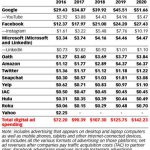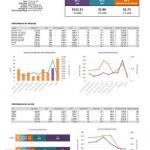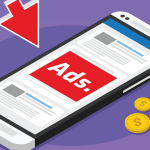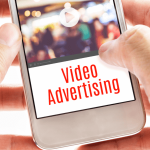Can Rubicon’s Customizable Ad Filter Make Online Advertising Less Annoying?
Websites and social networks are becoming junkyards of trashy advertising that blocks content (pop-ups), blares nonsense (autoplay video ads), grosses you out (toenail fungus cures), and peddles fake news (No, Chuck Norris is not dead). Today, Rubicon Project, an ad exchange company that robotically slaps advertising on a million websites and 20,000 mobile apps, introduced a browser plug-in that lets people block some of the worst offenders. But don’t call it an ad blocker.
“Ad filter is probably more appropriate than ad blocker,” Frank Addante, the company’s founder and CEO, tells Fast Company. “It’s really giving consumers choices over what they want to see or not on sites.”
The plug-in, called Project Awesome, will filter not only ads placed by Rubicon but also by any other ad exchanges, including inside Facebook. A forthcoming app will do the same for ads in mobile browsers and apps. But this will take time—if it succeeds at all, that is. Project Awesome launched in a test phase with a private beta (you can request access), and only for the Chrome browser.
“By no means are we saying we’ve got this all figured out and it’s perfect,” says Addante. “We want to work with consumers, we want to work with publishers and application developers, and we also want to work with the advertisers and agencies … and all the ad networks.” Addante says that he’ll need buy-in from across the publishing and ad industries to make the system work.

Rubicon isn’t the biggest exchange, but it’s not small, either. It handles 12 trillion bid requests per month from 500,000 advertisers, which are seen by more than a billion people on desktop and mobile. Clients include Condé Nast, News Corp, Reuters, Spotify, The Economist, The Guardian, The Los Angeles Times, USA Today, and Zynga.
One Person’s Trash Is Another’s Treasure
Plug-ins for Firefox and Safari are in the works, but Microsoft’s Edge will be tricky, since it doesn’t support plug-ins. “They have a different architecture, so we have to think about it,” says Shekhar Yadav, SVP of technology. In the future, he says, Project Awesome will be able to filter video advertising, ads that peddle fake news stories (a scourge of Facebook), and paid-placement links to articles on other sites (many of dubious quality) from services like Outbrain and Taboola. One day, the service will also let people block ads from any companies they have chosen to boycott. Consumers themselves could decide to keep Kellogg’s ads (or any other ads) off Breitbart, or the New York Times, or anywhere else.
Why would an ad-serving company provide a tool that blocks ads? Perhaps as an alternative to the more draconian tools that people are increasingly installing, particularly industry leader Adblock Plus, which the company says is running on 100 million devices. Adblock Plus, by default, only allows ads to go through if they meet its guidelines for being unobtrusive, and it takes a cut of revenue from those ads on larger sites. Users can also set the tool to block all advertising. (Mobile browsers, like Safari for iOS, also have built-in ad blockers.) With Project Awesome, Rubicon is offering an alternative, by letting people receive just the ads they are interested in—which will allow companies to reach just the people who want to hear from them, says Rubicon.
“Our vision is to turn advertising into information and provide the information as a service for consumers,” says Addante, comparing the practice to his parents buying the Sunday newspaper to get the coupons.
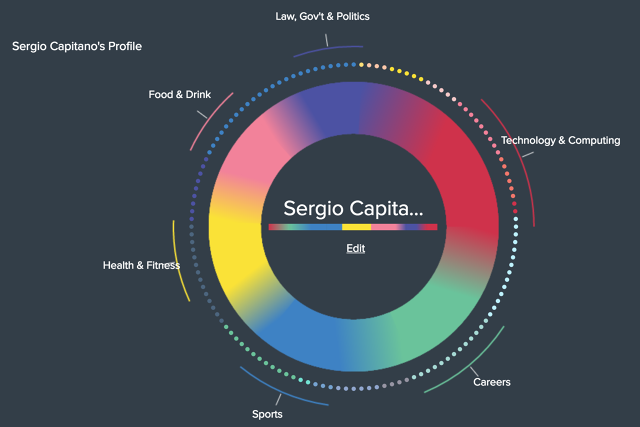
I tried Project Awesome, and it is quite easy to set up. At the beginning, rectangles with images of different types of products—like electronics or sports gear—float up the screen. Hovering over any of them for 2-3 seconds adds them to the list of topics to see adverts on. The process stops after 59 seconds, but afterwards, users can click on the browser plug-in to change their preferences, removing product categories or adding more in fine detail by searching for terms like “Personal Finance” or clicking on them in a page-filling word cloud.

I did have to set up an account first, providing my name and an email address—which could be the makings of an extensive marketing profile. Yadav says the data is encrypted and not used for ad targeting—only to create an account that the service needs to understand a user’s preferences. Instinctively wary, I used a fake name and a Gmail account I had created just for spam. They worked fine, making Project Awesome potentially less invasive than Google’s or Facebook’s own ad preferences settings, which are tied to a user account on their services.
In my cursory tests of a few websites—like the New York Times, Fox News, and Fast Company itself—I saw mainly ads for electronics, one of the topic areas I had selected. Project Awesome also has a Pandora-like function: Hovering over an ad brings up a toolbar providing options to “like” it or to “snooze” it—with the choice of blocking the ad for six months, a year, or forever. Project Awesome uses artificial intelligence to learn from these choices and refine the filters, says the company.
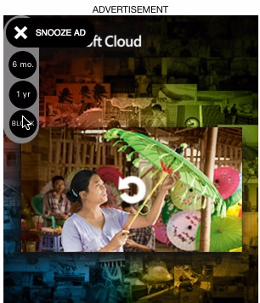
Eyeballs and advertising are quickly moving to mobile, and Project Awesome is headed there sometime next year, says Addante. This is a bit trickier. Since there are no plug-ins for mobile apps, Rubicon will make its own app with some patent-pending technology that applies heuristics, a type of AI.
“We are planning to basically intercept all the network traffic,” says Yadav, “and based on heuristics will certify what part of the network traffic is ads or sponsored content. We will identify that and then use that information to manage it based on the preferences of the user.”
Will Apple and Google let them get away with making such an app for iOS and Android devices? “At least what we know from their public documentation, there is no way they can block us from doing it,” says Yadav.
Even ads that people ignore cost money to run. Rubicon’s task is to prove to advertisers and publishers that the quality of ads is ultimately more lucrative than the quantity of things slapped on a web page. “If a consumer has already bought a product and they decide to snooze or block an ad, that’s saving you money,” says Addante.
Related Video: Can Advertising End Racism? This Advertising School’s Students Are Hopeful
Fast Company , Read Full Story
(52)


